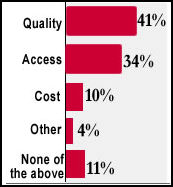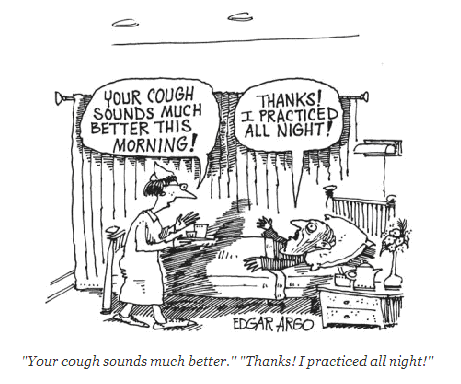
July/August 2010
Prime Time News can be accessed any time from the www.primeclinical.com website. Login and then select Newsletters.
Table of Contents (Click to Select) Hide
As part of both on-going training, and training for our new clients in areas when there isn't enough time in their purchased hours for one-on-one training, PCS is now hosting workshops for our clients.
What is a hosted workshop? A hosted workshop is an online class where attendees can interact with the host and other attendees.
The Workshop Schedule is now available online through our main website www.primeclinical.com. Once logged-in, select the Workshops & Ongoing Classes button on the right to access the Workshop Schedule. This schedule also includes our Ongoing Classes.
By David Herrig
You may have recently received a letter from the Department of Justice regarding E-Prescribing of Controlled substances, a portion of which stated:
“On March 31, 2010, the Drug Enforcement Administration (DEA) published in the Federal Register an Interim Final Rule with Request for Comment entitled "Electronic Prescriptions for Controlled Substances" (75 FR 16236) [Docket No. DEA-2IS, RIN 1117-AA61].”
“The rule will become effective June 1, 2010.
In connection with the above letter, we received information from Surescripts, the E-Prescribing routing company who handles all the interactions between providers and pharmacies.
Intellect’s Check Slip option, which allows the user to print a management report for payments posted, has been modified. A recent software update now gives six suboptions of formatting options for the Check Slip reports: Insurance Use, Bank Use, Detail Use Per Patient, Detail Use by Check Number, Detail Use by User Number, and Detail Use by Batch Number. These reports may be printed, exported to an Excel spreadsheet, emailed, or faxed. They may be requested for the total clinic or for any single provider.
Intellect's Eligibility feature has undergone changes in the past couple of months. These updates have been made in a column heading and subsequent data display, eligibility verification based on calendar date, and the ability to see the entire description provided by the insurance company instead of viewing only a portion of the message.
Before you leave our News menu option, take just a minute and click on Important Websites on the menu to the left. New information was added in June under both CMS and Palmetto.
Did you know that when a client’s reference is closed a customer survey is automatically sent to the client? Our Customer Surveys allow clients to give PCS feedback by answering 7 brief questions that cover topics such as how professional and knowledgeable the customer service agent was, or the timeliness of customer service response.
Our Customer Surveys assist management to determine employee performance and are a useful tool in developing and improving our quality of service and products.

She can be reached at 877-444-1156
Calls received at 5:00 p.m. PST or after will be returned during the next business day. If your call is urgent, please press 0 (zero) for an Operator so that you may be transferred to a support rep for immediate assistance.
The nation’s healthcare system is undergoing a transformation in an effort to improve quality, safety, and efficiency of care, from the upgrade to ICD-10 to information exchanges of EHR technology. To help facilitate this vision, the Health Information Technology for Economic and Clinical Health Act, or the "HITECH Act" established programs under Medicare and Medicaid to provide incentive payments for the "meaningful use" of certified EHR technology. The Medicare and Medicaid EHR incentive programs will provide incentive payments to eligible professionals and eligible hospitals as they adopt, implement, upgrade or demonstrate meaningful use of certified EHR technology. The programs begin in 2011. These incentive programs are designed to support providers in this period of Health IT transition and instill the use of EHRs in meaningful ways to help our nation to improve the quality, safety, and efficiency of patient health care.
The Food and Drug Administration and the website www.drugs.com have teamed to broaden the reach of FDA's consumer health information.
A new partnership forged by the two entities provides consumers with a joint resource on Drugs.com's site that features FDA Consumer Update articles, videos, and slideshows. It will also bring FDA health information to Drugs.com’s mobile phone platform.
A report card on health insurers' claims processing practices shows wide performance variations among seven national commercial payers. As a group, they also have considerable room for claims processing improvement, according to the American Medical Association's third annual National Health Insurer Report Card.
In total, 20 percent of physician claims are processed inaccurately, according to the AMA, which claims fixing that problem could save $15.5 billion annually.
For the first time, the majority of the insured American workforce will have a health care deductible of at least $400 in 2011 as employers continue to raise out-of-pocket limits, replace co-pays with co-insurance and add high-deductible health plans, according to the annual "Behind the Numbers" report from consultancy PricewaterhouseCoopers' Health Research Institute.
The cost shifting will lead to an expected nine percent increase in employer medical costs in 2011, on the heels of an estimated 9.5 percent increase in 2010, according to PWC.
Note: The following article is also available from this website by clicking on the Important Websites option and then selecting "ICD-10 Implementation".
The first ICD-10-related compliance date is less than 2 years away. On January 1, 2012, standards for electronic health transactions change from Version 4010/4010A1 to Version 5010. Unlike Version 4010, Version 5010 accommodates the ICD-10 code structure. This change occurs before the ICD-10 implementation date to allow adequate testing and implementation time.
On October 1, 2013, medical coding in U.S. health care settings will change from ICD-9-CM to ICD-10. The transition will require business and systems changes throughout the health care industry. Everyone who is covered by the Health Insurance Portability and Accountability Act (HIPAA) must make the transition, not just those who submit Medicare or Medicaid claims. The compliance dates are firm and not subject to change. If you are not ready, your claims will not be paid. Preparing now can help you avoid potential reimbursement issues.
Read more>>
Patients with elevated blood pressure who used a wireless electronic pill bottle were 27% more likely to adhere to their anti-hypertension prescription drug regimen than patients without the electronic pill bottle, according to an interim analysis of an ongoing study, Healthcare IT News reports.
The Center for Connected Health is conducting the six-month study, which aims to evaluate the effectiveness of the wireless prescription product GlowCap. GlowCap, which was developed by the medical product firm Vitality, fits popular pill containers and uses lights and sounds to alert patients to take their medications at appropriate times.
For those high volume submitters using a gateway to gateway connection using AS2 or thinking of using a high volume solution in the future, you might find this e-mail of interest. The Implementation Specification found in the Health Level Seven (HL7) Individual Case Safety Reporting (ICSR) files has been updated with some important information.
In January, CMS will launch a $10 million demonstration project of imaging software packages that federal health officials hope will help physicians make the best decisions when ordering medical imaging tests for patients, HealthLeaders Media reports. The project's software packages offer "appropriateness criteria" to guide physicians who are not sure which tests would be suitable for a specific patient. The demonstration project was outlined in the Medicare Improvements for Patients and Providers Act of 2008.
 Forty-one
percent of health IT professionals surveyed believe that health IT will
improve health care quality as a result of the new health reform law,
according to a new Healthcare
Information and Management Systems Society survey.
Forty-one
percent of health IT professionals surveyed believe that health IT will
improve health care quality as a result of the new health reform law,
according to a new Healthcare
Information and Management Systems Society survey.
The Patient Protection and Affordable Health Care Act, signed into law on March 23, details several areas in which health IT should be able to improve health care.
Thirty-four percent of respondents said that health IT will improve access to health care, while 10% said IT would reduce costs. Eleven percent of respondents said they do not believe health IT will have an impact in any of these areas. See accompanying graph by Data Point.
Results are based on an April 2010 online survey of 204 health IT professionals.
Source: HIMSS, "Patient Protection and Affordable Health Care Act", Wednesday, May 12, 2010

Saturday Evening Post